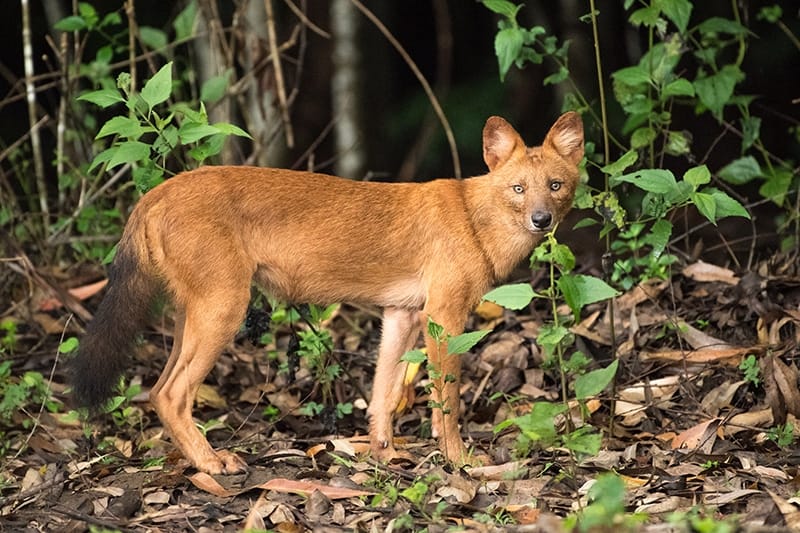When you glance over at the curled-up, spoiled pooch on your sofa, it’s hard to imagine a life before domesticated dogs. Over the years, dogs have gone from being our hunting partners and protectors to becoming our fur babies that make weekly trips to the groomer for a bit of pampering. But do you ever think about the wild dogs living in our world?
Hearing the term wild dog instantly makes most people think of the Gray Wolf or the Australian Dingo. Whether you realize it or not, there are several other wild dog breeds around the world. These animals may never find their way into your home as part of your doggy family, but knowing more about them can help keep you safer when you’re out and about, especially at night. Let’s take a look at types of wild dog breeds so you know what to keep your eyes open for when you’re navigating the world around you.

The 10 Types of Wild Dogs
1. African Wild Dog
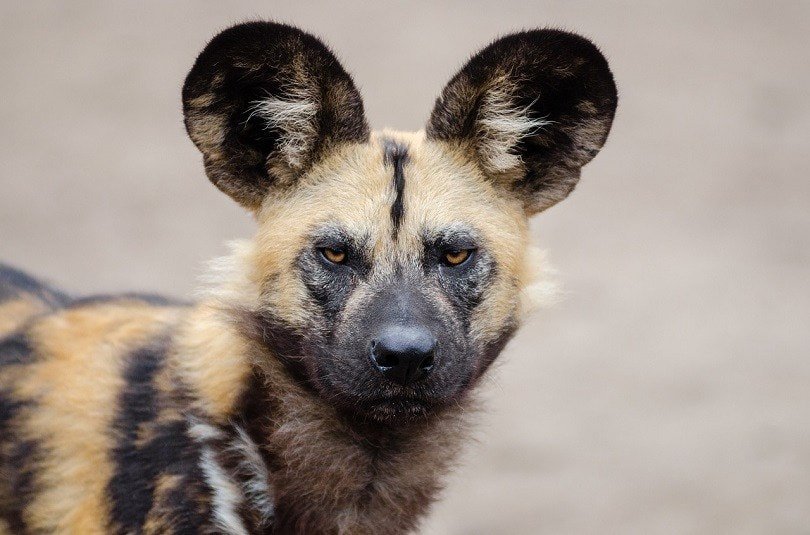
- Scientific Name: Lycaon pictus
- Location: Sub-Saharan Africa
- Status: Endangered
The African Wild Dog is a black and tan spotted carnivorous canid that features 5 subspecies including Cape Wild Dogs, East African Wild Dogs, West African Wild Dogs, Chad Wild Dogs, and Somali Wild Dogs. These dogs originated in Sub-Saharan Africa and are fans of open hunting lands. These pack hunters are most recognizable by their large round ears. These dogs vary in weight between 45 to 75 pounds according to which subspecies they belong to.
2. Australian Dingo

- Scientific Name: Canis lupus dingo
- Locations: Australia
- Status: Endangered
Dingoes are easily one of the best-known wild dogs out there. Dingoes look quite similar to domestic dogs but have slight differences. You’ll notice that Dingoes have longer muzzles and teeth with coyote-like tails. Unfortunately, due to environmental issues in Australia, the number of Dingoes has been dwindling over the past few years. Over the years there have even been reports of Dingo attacks on humans, but these are often explained away by people provoking the animals.
3. New Guinea Singing Dog

- Scientific Name: Canis dingo hallstromi
- Location: New Guinea
- Status: Endangered
The New Guinea Singing Dog also called the Highland Wild Dog, is believed to originate in the Highlands of New Guinea. These dogs share many similarities with the Dingo although they are smaller and leaner. Even though these dogs look like Dingoes, they also share taxonomic factors with domestic dogs. Of course, these wild dogs are best known for their singing ability. The singing howl is often done in unison while the dogs hold the notes like experts.
4. Dhole
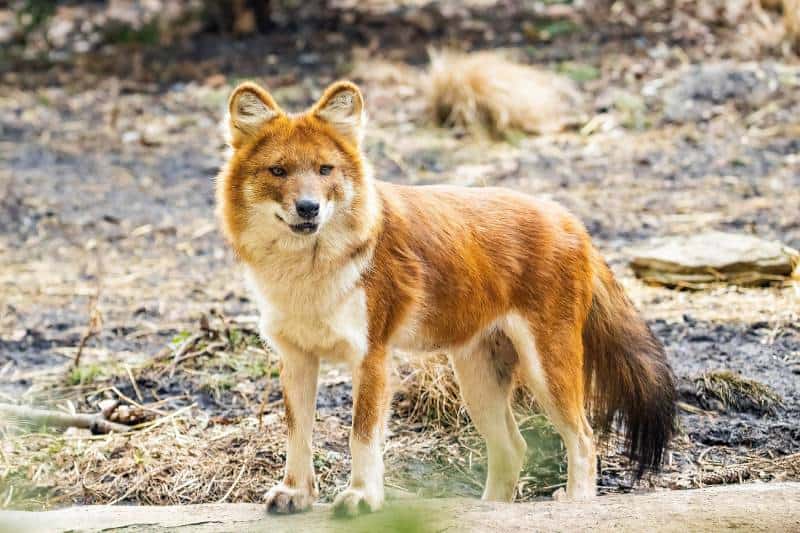
- Scientific Name: Cuon alpinis
- Location: Certain parts of Central, East, South, and Southeast Asia
- Status: Endangered
Dholes are genetically related to wild dogs in the Canis family but are part of the Canid family. These wild dogs are often found in mountainous or tropical regions. Dholes have a reddish appearance like a red fox with white markings on the chest and legs. Dholes live in packs of 10 or more animals and are best known for the special whistle they use to communicate with one another.
5. Coyote
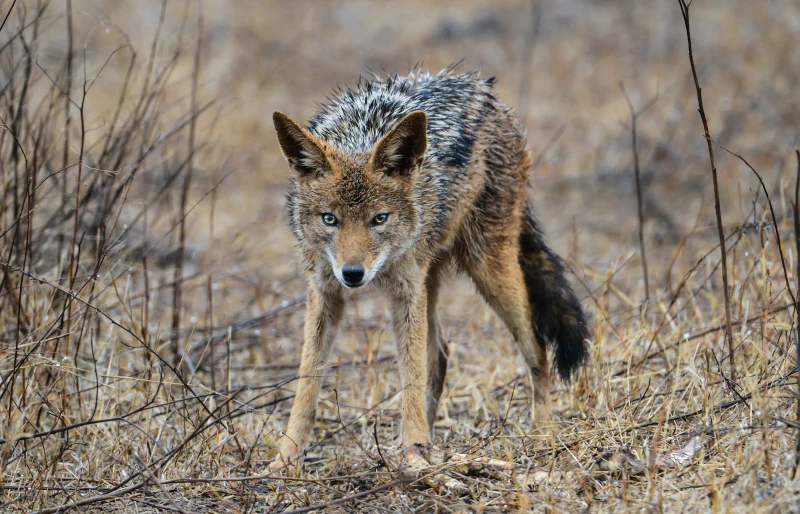
- Scientific Name: Canis latrans
- Location: North America
- Conservation Status: Least Concern
The Coyote is one of the most common wild dogs and their numbers are steadily growing. Featuring either a dark red or light gray coat, Coyotes are adaptable and can live in most regions. These wild dogs are similar to the Gray Wolf and feed on rodents, deer, rabbits, and other game in the area.
6. Bush Dog
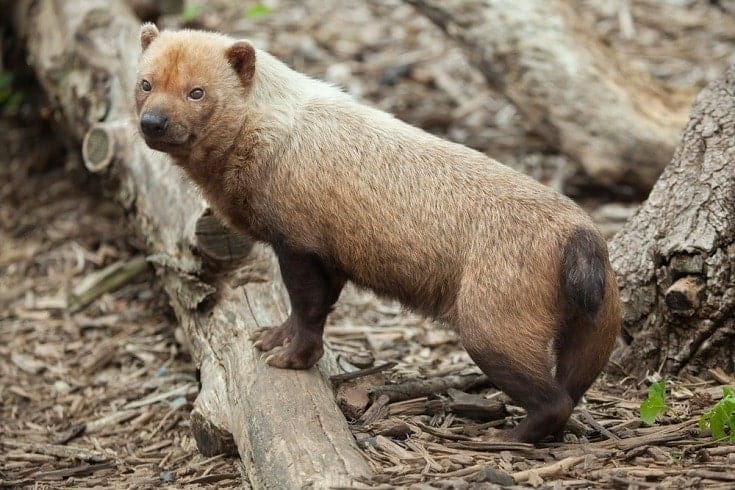
- Scientific Name: Speothos venaticus
- Location: South America
- Conservation Status: Near Threatened
Found in the rainforests and savannas of South America, the Bush Dog is one of the rarest wild dogs in the world. Due to deforestation, population defragmentation, and lack of prey, this animal is at a near-threatened status. These carnivorous canids have webbed feet to traverse the terrain and are similar to badgers in appearance.
7. Gray Wolf
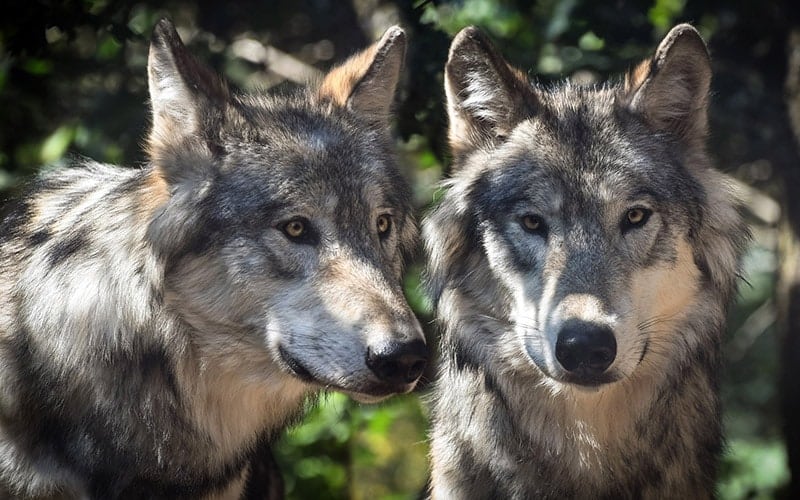
- Scientific Name: Canis lupus
- Location: North America, Europe, and Asia
- Conservation Status: Least Concern
The Gray Wolf is the largest, and easily most popular, member of the Canidae family. Considered the ancestor of the domestic dog, the Gray Wolf is a pack animal and hunts prey of all sizes. There are several subspecies of this wild dog with Gray Wolves showing different colors or sizes depending on the area where they are found.
8. Maned Wolf

- Scientific Name: Chrysocyon brachyurus
- Location: South America
- Conservation Status: Near Threatened
The Maned Wolf is found in the open woodland in areas such as Bolivia, Brazil, Argentina, and Peru. It is also the record holder for the tallest canid and is the biggest dog breed found in South America. The Maned Wolf is compared with the Gray Wolf although they are taller but obviously lighter in weight.
9. Short-Eared Dog

- Scientific Name: Atelocynus microtis
- Location: South America
- Conservation Status: Near Threatened
Found in the rainforests of the Amazon, this secretive wild dog resembles a small bear. Due to unfortunate habitat issues, these animals are near threatened. Rarely seen, the Short-Eared Dog has webbed feet, short ears, and a long tall. Thanks to the webbed feet, it is believed that these dogs could adapt easily to water.
10. Raccoon Dog
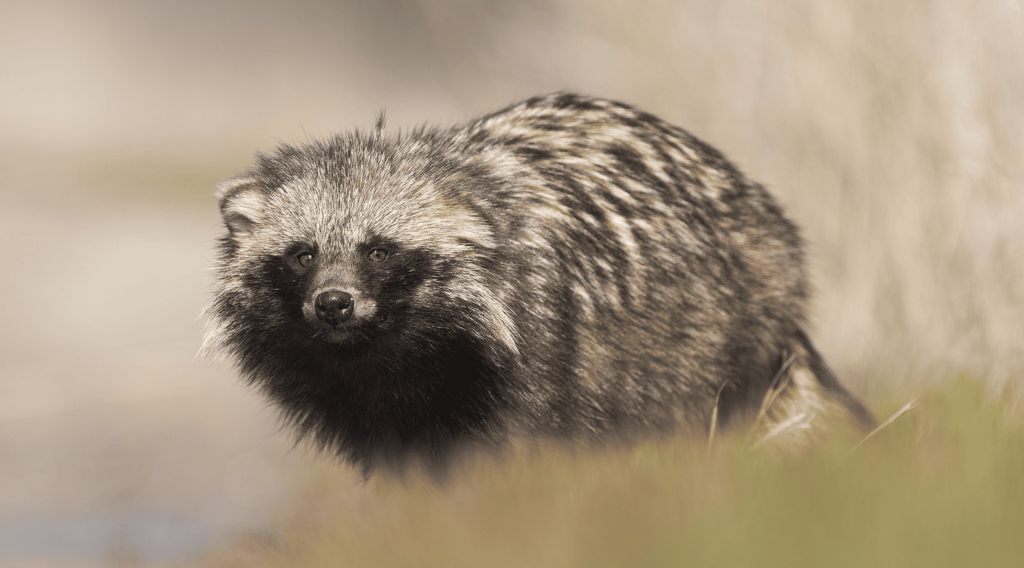
- Scientific Name: Nyctereutes procynoides
- Location: Europe and Asia
- Conservation Status: Least Concern
The Raccoon Dog may have originated in Eastern Asia but over the years it has been deported and spread to other regions. Looking more like raccoons, these wild dogs are omnivores. They are also one of only a handful of canids that can climb trees.

Conclusion
As you can see, there are many wild dogs found in our world. Each of these animals has its differences and similarities, but their ancestry cannot be denied. If you’re interested in learning more about the canids out there, this list is a great place to start. Hopefully, it can help you learn what wild dogs are around you and how you can identify them when needed. As always, if you’re in the vicinity of a wild animal, use caution. Never allow curiosity to put you or others around you in danger.
Read Also:
- Endangered Dog Breeds That Could Go Extinct (With Pictures)
- 13 African Dog Breeds: A Complete Overview
Featured Image Credit: Vinod V Chandran, Shutterstock
